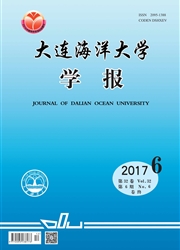

 中文摘要:
中文摘要:
以中国北方滩涂湿地优势种植物翅碱蓬Suaeda heteroptera Kitag为研究对象,以滩涂湿地沉积物为供试环境,通过盆栽试验研究了不同含量的重金属Cu(0、100、200、400mg/kg)和Pb(0、200、400、600mg,/kg)对沉积物理化性质和翅碱蓬生物量的影响。试验在直径为10cm的塑料花盆中进行,每天用盐度为15的稀释海水浇灌两次,翅碱蓬共栽培28d,试验结束时测定翅碱蓬体内和沉积物中重金属的含量,并分析翅碱蓬对cu和Pb的吸收规律和蓄积特征。结果表明:cu和Pb均会抑制翅碱蓬的生长,但Pb含量为600mg/kg的处理组中翅碱蓬的生物量有增加趋势,说明其在高浓度Pb胁迫下具有较强的耐Ph毒性能力;翅碱蓬各部位对cu、Pb的蓄积顺序均为地下部分〉地上部分,并且随着沉积物中重金属含量的增加,翅碱蓬体内的cu、Pb含量也增加。
 英文摘要:
英文摘要:
Suaeda heteroptera Kitag, as a dominant plant found in tidal wetlands in north China, was planted in 10 cm diameter plastic pots filled with tidal sediments containing heavy metals Cu ( 0,100,200 mg/kg, and 400 mg/kg) and Pb (0,200,400 mg/kg, and 600 mg/kg)and irrigated by seawater with a salinity of 15 twice a day for 28 days to study the influence of the heavy metals Cu and Pb on the physical and chemical properties of the sedi- ment and on Cu and Pb absorption and accumulation. The results showed that growth of the plant was inhibited by Cu and Pb levels, but the plant had the enhanced biomass in the Pb concentration of 600 mg/kg, indicating that the plant showed a strong resistance capacity to Pb toxicity with high concentration of Pb. The Cu and Pb accumula- tion in the various parts of the plant was ranged as the following: the heavy metal concentration in underground part 〉 the heavy metal concentration at the ground surface part. The concentrations of Cu and Pb in the plant were found to be increased with the increase in Cu and Pb levels in the sediments.
 同期刊论文项目
同期刊论文项目
 同项目期刊论文
同项目期刊论文
 期刊信息
期刊信息
